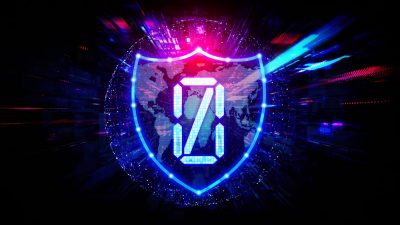Every enterprise in operation today faces a number of risks, not only from external sources but from internal resources that sometimes accidentally create the gateway for security concerns. The organizations face cyber-attacks aimed to steal data and implement geopolitical threats that could disrupt the complete operations. Many security experts are concerned that most of the organizations don’t actually know about the security risk that their daily business faces, what are threats that affect the business survival and what type of security concerns can cause operational hiccups? Bigger enterprises with chief risk officers and an entire team dedicated to the risk department that can identify, classify, mitigate, and monitor risks. Even organizations that are currently working in highly regulated space tend to take the cybersecurity with the understanding of risks. However, if we compare most of the organizations on the mature scale, they score poorly on the scale, making them vulnerable to attacks. The average company deals when it comes to security concerns and risks according to operation and tends to be on an ad-hoc basis. The recent findings from the National Association of Corporate Directors gave a clear understanding of the security risk. In its 2019 Governance Outlook Projections on Emergency Board matter report, they found that 82 percent of the respondents in its annual survey said that they are confident on the management ability to deal with security risks while 70 percent said in statement that they are still in the process of understanding the risks and opportunities affecting company performance. The business should be better aware of the security risks that threaten the organization, and they need to better manage those risks. The process starts with having an internal security team that can look for potential gateways and risk associated with cloud, hardware, or software.
Candy Alexander, a veteran security executive, serving President of ISSA International, said on risks that they are something that introduces potential burden on the business. So businesses should be aware if something were about to happen, how much impact would it have on the complete business. You need to know your risk appetite is or where you position yourself in terms of business risks. She added that when she works with different organizations to set their risk appetites, she goes ahead with identifying each risk, and they separate them based on how much damage they could do if it happens. Ranking each risk based on criticalness from high to low makes it easier for us to acknowledge where exactly the enterprises should focus.
Deciding the Criticalness of risk
Establishing risk criticalness based on the business operation is very imperative for any business. It enables the security teams to align their efforts during any cyber-attack. Every business has limited resources when it comes to dealing with security risks by prioritizing the risks they can focus their spending, activities on a daily basis and staff requirement on critical business risks that can affect the maximum revenue of the business. If the risk tolerance isn’t defined it’s hard for management to determine how it can invest in the necessary tools and resources to secure the business operation. When an organization leader says that we can’t tolerate any cyber-attack, the team knows that they need to give zero tolerance to any cybersecurity risks. It provides a complete direction to security team whether they should invest in security tools and right skills so that at all costs, business is secured from the threats. If the organization says that their tolerance towards attacks is least that they will be able to tolerate attacks without breaking their business, the security team need to secure critical applications and hardware that can cost most critical effect.
Decision making
One of the most important steps for organizations today, when they try to define their risk appetite, is to clearly state on who gets the complete task. Enterprises need to decide who would be the decision making a person when it comes to deciding on the business risk because usually, businesses fail to decide an increase in the risk. Enterprises with a dedicated risk function make it easier for them to define their goals and decision making when it comes to deciding on the risks. Gary Hayslip, IT executive and Co-author of CISO Desk Reference Guide said that the organizations own its risks. Because each risk has been born from the decisions taken by the CISO, COO, and CIO. Gary had recently worked with a company that had a team of executives including CISO, COO, general counsel, and CIO that all were responsible for decision making on identifying and managing the risks. It’s the best approach that can be taken by the organization when dealing with risks that can affect the business operation.
Identify risks
Once the decision makers are identified, the next step security experts advise them is to identify the types of problems that could completely threaten the ability of business operation. Such types of problems can be identified with risks associated with them, and they can be broken down in more detailed situations where the criticalness can define the risk. For example, executives could identify cyber threats as a category of risk and identify based on the data breaches and malware specific types based on the risks within the category. Regulatory compliance can be put in the other category wherein they required satisfying certain specific federal regulations and domain regulations. Experts from the industry have recommended using the risk assessment framework wherein such as those from National Institute of Standards and Technology (NIST) or Factor Analysis of Information Risk (FAIR) or any third-party consultant with experience in security risk identification can assist them that could harm organization ability in its operation.
Conclusion
When it comes to identifying the risks based on criticalness, security teams should take the business operation as the primary focus. The business should translate all the findings from risk assessment to filter out the noise and present the complete risk scenario of the organization. This would assist in developing a verified risk scenario with tolerance. Having a robust plan to deal with the most critical scenarios will help the decision makers plan for the required resources during the attack.
To know more, download the latest whitepapers on IT Security.














